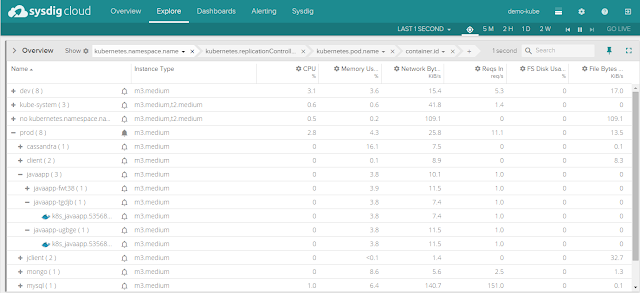After talking to hundreds of Kubernetes users, it seems that the typical cluster administrator is often interested in looking at things from the physical point of view, while service/application developers tend to be more interested in seeing things from the logical point of view.
With both these use cases in mind, Sysdig Cloud’s support for Kubernetes works like this:
* By automatically connecting to a Kubernetes’ cluster API Server and querying the API (both the regular and the watch API), Sysdig Cloud is able to infer both the physical and the logical structure of your microservice application.
* In addition, we transparently extract important metadata such as labels.
* This information is combined with our patent-pending ContainerVision technology, which makes it possible to inspect applications running inside containers without requiring any instrumentation of the container or application.
Based on this, Sysdig Cloud can provide rich visibility and context from both an **infrastructure-centric** and an **application-centric** point of view. Best of both worlds! Let’s check out what this actually looks like.
One of the core features of Sysdig Cloud is groups, which allow you to define the hierarchy of metadata for your applications and infrastructure. By applying the proper groups, you can explore your containers based on their physical hierarchy (for example, physical cluster \> minion machine \> pod \> container) or based on their logical microservice hierarchy (for example, namespace \> replication controller \> pod \> container – as you can see in this example).
If you’re interested in the utilization of your underlying physical resource – e.g., identifying noisy neighbors – then the physical hierarchy is great. But if you’re looking to explore the performance of your applications and microservices, then the logical hierarchy is often the best place to start.
[

](https://4.bp.blogspot.com/-80u3oSEi_Fw/Vkz8AZgE6eI/AAAAAAAAAtE/3iRDMJKBNmc/s1600/sisdig%2B5.png)